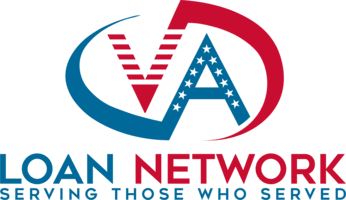Last Updated June 17th, 2025
Buying a home with a VA loan comes with major benefits—and a few extra steps.
One of the most important is the VA appraisal, which ensures your new home is safe, sound, and up to code with VA’s Minimum Property Requirements (MPRs).
Unlike a standard home inspection, the VA appraisal is mandatory and can make or break your loan approval. This guide dives deep into everything you need to know: what the VA looks for, how to pass, common pitfalls, and how to handle issues.
Whether you’re a first-time buyer or a seasoned Veteran, this is your essential playbook.
In this Article
What Are VA Loan Inspection Requirements?
VA inspections are officially called VA appraisals. They are mandatory, and their purpose is twofold:
- Confirm the property’s market value.
- Ensure it meets the Minimum Property Requirements (MPRs) set by the U.S. Department of Veterans Affairs.
These MPRs ensure the home is safe, sanitary, and structurally sound. Unlike traditional home inspections—which are optional and more detailed—a VA appraisal focuses only on whether the home qualifies for VA financing.
Quick Breakdown of VA Appraisal Priorities:
- Safety: No hazards (e.g., exposed wiring, missing handrails).
- Sanitary conditions: Functioning plumbing, clean water, proper waste disposal.
- Structural integrity: Solid foundation, roof, and walls.
- Habitability: The home must be livable immediately.
VA Appraisal vs. Home Inspection: Key Differences
| Aspect | VA Appraisal | Home Inspection |
|---|---|---|
| Purpose | Assess MPRs & value | Detailed condition review |
| Required? | Yes | No (but highly recommended) |
| Scope | Basic safety, sanitation, habitability | Systems, appliances, future maintenance |
| Cost | $400–$800 | $300–$500 |
| Conducted by | VA-approved appraiser | Licensed inspector |
Deep Dive: Key VA Minimum Property Requirements (MPRs)
1. Safety Standards
No exposed wiring, overloaded circuits, or damaged electrical panels.
Operational smoke and carbon monoxide detectors.
No chipping or peeling lead-based paint (especially pre-1978 homes).
2. Sanitary Conditions
Safe, potable water supply.
Functioning sewage system or septic tank.
No pest infestations—termite inspections may be required.
3. Structural Integrity
Roof with 2+ years of life, no leaks.
Stable foundation with no major cracks.
Windows and doors must operate properly.
4. Mechanical Systems
Heating and cooling must function.
Electrical system must be code-compliant.
Plumbing must be operational and leak-free.
5. Accessibility & Utilities
Year-round access to the property.
Adequate lighting and ventilation.
- Connection to utilities or approved private systems.
Common VA Appraisal Issues (And How to Fix Them)
| Issue | Typical Resolution |
|---|---|
| Peeling paint | Repaint or remove lead-based layers |
| Roof damage | Patch or replace roof |
| Faulty wiring | Hire licensed electrician |
| HVAC not working | Service or replace HVAC system |
| Broken windows | Replace with compliant glass |
How to Prepare for a VA Appraisal (Step-by-Step)
What Happens If the Home Fails the VA Appraisal?
If the home doesn’t meet MPRs, the appraiser will issue a Notice of Value (NOV).
- Negotiate Repairs: Ask the seller to fix items.
- Lower the Price: Adjust contract price based on value.
- Walk Away: Cancel the deal if needed.
- Reconsideration of Value: Submit new comps to challenge low appraisal.
What Fails a VA Appraisal? Top Dealbreakers
The VA appraisal process is not just about estimating a home’s value—it’s also about ensuring the property meets strict safety, livability, and structural integrity standards set by the Department of Veterans Affairs. If a home falls short in any of these areas, it may “fail” the appraisal and require repairs before the loan can move forward. Below are some of the most common dealbreakers that can jeopardize VA loan approval:
Outdated or unsafe electrical wiring – Exposed wires, overloaded panels, or knob-and-tube wiring can be flagged as safety hazards.
Leaky roofs or roof damage – Missing shingles, active leaks, or signs of water damage often require immediate repair to meet VA standards.
Non-functioning HVAC systems – Heating and cooling must be in working order to ensure the home is livable in all seasons.
Peeling paint in older homes – Especially in homes built before 1978, peeling paint may indicate lead-based hazards, which must be addressed.
Staircases without handrails – A common safety issue, lack of handrails on stairways is a frequent reason for a failed appraisal.
Insect or termite damage – Evidence of pest infestation, especially structural damage from termites, is a major red flag.So a termite inspection is usually required.
Lack of potable water or functioning sewage system – A home must have safe drinking water and a reliable waste disposal system.
Poor property access – Homes must have all-weather road access, meaning unpaved or poorly maintained roads can trigger issues.
Why You Still Need a Home Inspection
VA appraisals aren’t designed to uncover every potential issue. A home inspection helps identify problems with appliances, roofing, and general systems—giving you leverage during negotiations and long-term protection.
The Bottom Line
Expanded FAQs: VA Loan Inspection Requirements
1. Can a seller refuse to make VA-required repairs?
Yes, but buyers can negotiate or cancel the deal if repairs are refused.
2. What is the “Tidewater Initiative”?
If a low valuation is expected, lenders can submit new comps before the appraisal is finalized.
3. How does a VA appraisal differ for new construction?
New homes must still meet MPRs, plus warranty paperwork and certifications.
4. What is a Notice of Value (NOV)?
Official document outlining appraised value, required repairs, and timeframes.
5. Can I get a second appraisal?
Only in rare cases. Most use the Reconsideration of Value process.
Final Thoughts & Next Steps
Understanding VA loan inspections is essential for a smooth homebuying experience. The appraisal ensures your new home is safe and habitable while protecting your investment. Prep ahead, hire a quality home inspector, and stay engaged with your lender through the process.
Ready to move forward? Get pre-approved with a VA-approved lender, and use this guide to navigate your next steps with confidence.


